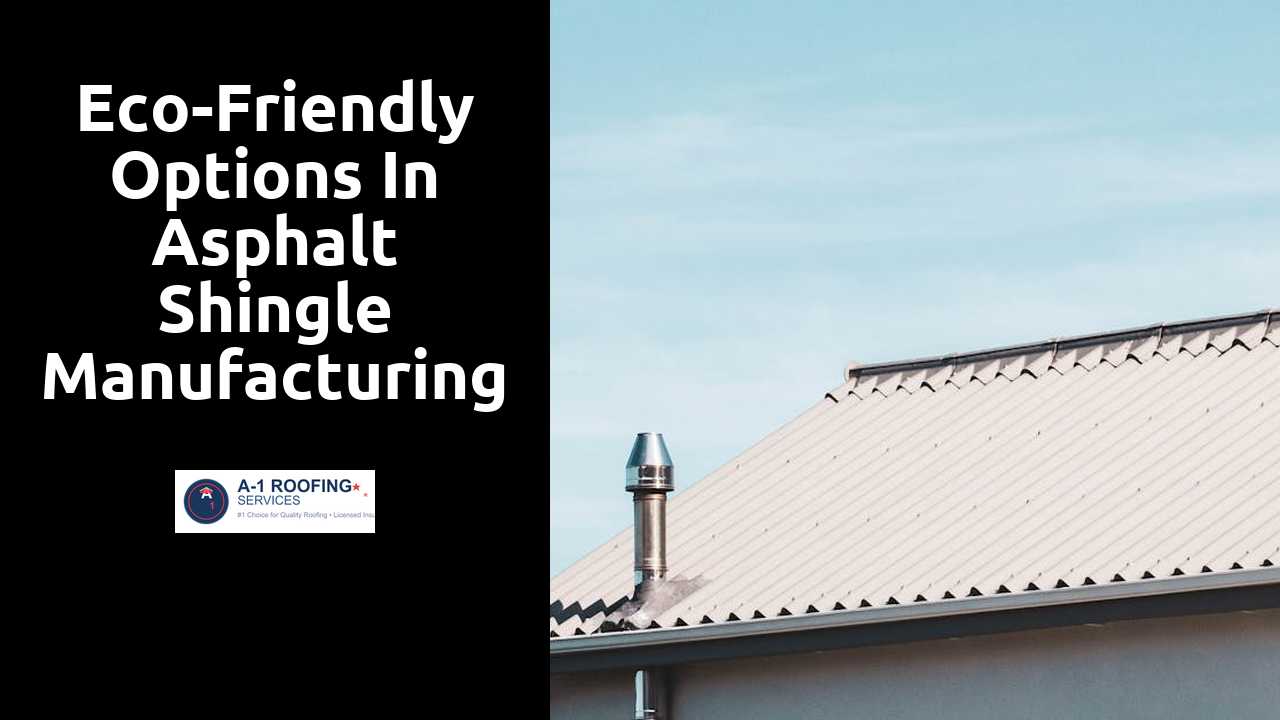
Eco-Friendly Options in Asphalt Shingle Manufacturing
Table Of Contents
Certification Programs for Green Building Products
The construction industry has seen a rise in certification programs aimed at promoting environmentally responsible building products. Several organizations have established criteria that materials must meet to be labeled as eco-friendly. These certifications often focus on aspects such as recyclability, energy efficiency, and the use of sustainably sourced ingredients. By adhering to these standards, manufacturers not only commit to sustainable practices but also provide consumers with assurance regarding the environmental impact of their choices.
Certification programs have also significantly influenced consumer behavior. Homeowners and builders increasingly seek products that are certified green. This interest is driven by a growing awareness of environmental issues and a desire to make responsible choices in construction and renovations. As a result, many roofing manufacturers are investing in meeting these standards to appeal to the market, reflecting a shift toward sustainability in building practices.
Check out this site for more information.
Leading Organizations and Their Standards
Several organizations play a pivotal role in establishing standards for eco-friendly asphalt shingle manufacturing. The Energy Star program, managed by the Environmental Protection Agency (EPA), emphasizes energy efficiency in building materials. They certify products based on their ability to reduce energy consumption, which can lead to lower utility bills and a more sustainable home. Another significant entity is the Cradle to Cradle Products Innovation Institute, which evaluates materials to ensure they are safe, circular, and responsible throughout their lifecycle.
The National Roofing Contractors Association (NRCA) also contributes to promoting sustainable practices within the roofing industry. They offer guidelines that help contractors and manufacturers adopt eco-friendly options in their production processes. Additionally, the Leadership in Energy and Environmental Design (LEED) certification provides an established framework for recognizing environmentally responsible building materials. These organizations collectively ensure that asphalt shingles meet specific environmental standards, benefiting both the industry and consumers looking for sustainable roofing options.
Case Studies of Eco-Friendly Shingle Usage
One notable case study involved a residential project in Seattle, Washington, where eco-friendly asphalt shingles were used to create a sustainable roofing solution. The homeowners prioritized energy efficiency and durability when selecting materials. With an emphasis on recycled content, the shingles contributed to a significant reduction in the carbon footprint of the construction process. This project not only showcased the aesthetic appeal of green materials but also demonstrated how they can enhance overall home performance.
Another example can be found in a commercial building in Austin, Texas, which utilized eco-friendly asphalt shingles as part of its green building certification strategy. The choice of shingles aligned with the broader goals of reducing energy consumption and promoting sustainable practices. The installation team's careful attention to detail ensured that the roofing system met rigorous environmental standards. This case illustrates the growing acceptance of eco-friendly shingles in diverse architectural settings, leading to increased interest among developers and builders seeking to implement sustainable practices.
Successful Projects Highlighting Sustainability
Innovative projects across the United States have demonstrated the potential of eco-friendly asphalt shingles in achieving sustainability goals. One notable example is a residential development in California that utilized shingles made from recycled materials. The project not only enhanced the aesthetic appeal of the homes but also contributed to lower energy costs through improved insulation. This integration of sustainable roofing materials highlighted the developers' commitment to environmental responsibility while providing homeowners with durable and stylish options.
Another impressive case involved a commercial building in Chicago that sought LEED certification. The roofing team chose eco-friendly asphalt shingles designed to reflect solar heat, significantly reducing the structure's energy consumption during peak summer months. The project successfully showcased how urban buildings can incorporate green materials and practices, setting a precedent for similar initiatives in metropolitan areas. These examples underscore the growing shift towards sustainability in construction, encouraging more builders to adopt eco-conscious practices.
Consumer Demand for Green Roofing Options
The rising awareness of environmental issues has significantly influenced homeowners' preferences for roofing materials. Many consumers actively seek sustainable options that contribute to energy efficiency and reduced environmental impact. This trend is not only about personal choice but also reflects a growing collective responsibility towards sustainable living. Homeowners are increasingly considering how their choices align with broader environmental goals.
As a result, manufacturers are adapting to this evolving demand by developing innovative eco-friendly asphalt shingles. These products often feature recycled materials, reflectivity for better energy efficiency, and longer lifespans. Increased transparency regarding the environmental impact of roofing materials has made it easier for consumers to make informed decisions. Market research indicates that eco-friendly features can enhance the attractiveness of homes, further driving demand for green roofing solutions.
Trends in Eco-Friendly Home Improvements
Homeowners increasingly seek sustainable solutions for their residences, driven by a growing awareness of environmental issues. This shift has led to a rise in the popularity of eco-friendly roofing materials, particularly asphalt shingles that incorporate recycled products and environmentally safe manufacturing processes. Consumers are not only looking for materials that reduce their carbon footprint but also those that offer durability and aesthetic appeal. Shingles made from recycled waste have become a viable option, showcasing innovations in the industry that meet both ecological and design requirements.
As eco-friendly home improvements gain traction, they often reflect broader lifestyle choices emphasizing sustainability. Many consumers are interested in energy-efficient homes, which includes selecting roofing materials designed to enhance energy performance. Reflective shingles that reduce heat absorption are becoming favored choices, contributing to overall energy savings. Additionally, the integration of solar technology with traditional roofing systems offers a dual benefit—enhancing energy harnessing capabilities while maintaining aesthetic integrity. This surge in eco-conscious home improvements illustrates a significant shift in consumer priorities and underscores the importance of sustainable practices in the building sector.
Related Links
Understanding the Warranty of Asphalt ShinglesBest Practices for Maintaining Asphalt Shingle Roofs